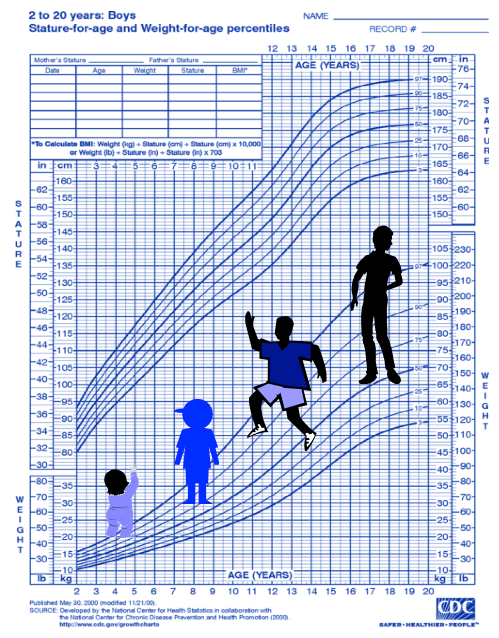Creating Your Child’s Growth Book From Newborn to Adolescent
Tracking Height and Weight

The best way to evaluate whether your child is getting too many, too few, or just the right amount of calories is to create a Growth Book that tracks changes in your child’s height and weight. Whenever you notice significant shifts in percentiles, you’ll be able to make the nutritional and activity changes necessary to prevent your child from becoming obese. And as you now know, obesity inevitably leads to a future laden with chronic diseases.
Along with your visits to the pediatrician, your Growth Book will allow you to gather a clear picture of your child’s growth, from infancy through adolescence. Keeping a Growth Book allows you to partner with your pediatrician, to record important information that can be passed along to him or her at your visits. After visits, you’ll add the information you receive from your pediatrician to the Growth Book. Be sure to tell your pediatrician about any changes you see in between scheduled visits.
As you can see in the chart below, it may seem that we’re just plotting numbers, but we’re actually plotting the healthy growth of our children from infancy through adolescence:

During the first year when you’re seeing your pediatrician at frequent intervals, you don’t need to make any of these measurements yourself. Just record the doctor or nurse’s measurements on your charts. After your visits become less frequent, you can make the measurements every few months. Once your child starts school, you can make the measurements perhaps every six months. If height and weight are increasing at the same rate, don’t measure more often – you don’t want your child to overly fixate on weight. But if weight begins to increase faster than height, then start cutting back on calories and increasing your child’s exercise. If weight gain continues, call your physician.
Measuring Your Child’s Height and Weight
When your child is young, while bathing or changing her, you can use a tape measure to calculate her length. To weigh her at home, first step on the scale, weigh yourself, and record the number. Then hold her in your arms and step back onto the scale. Subtract your weight (the first number) from the weight of you and your baby (the second number) to calculate your baby’s weight. Plot that number on the Growth Chart for your child’s age and gender.
Once your baby is walking, you can turn the height and weight measuring into a fun activity. Hang a long measuring tape from a door or wall, and mark your child’s height on the wall. This way, everyone in the family can watch your toddler grow and celebrate every inch. For weighing your toddler, you might want to purchase a scale with large digital numbers and let your toddler weigh herself as you watch. (He’ll get a head start in learning numbers and circumvent the fear of scales!)

